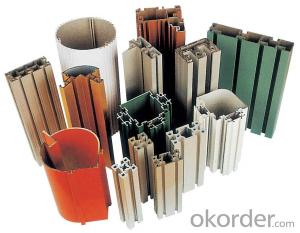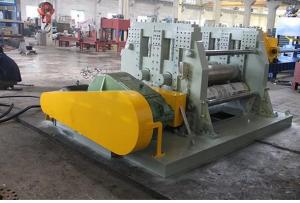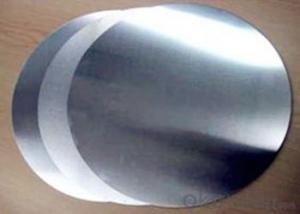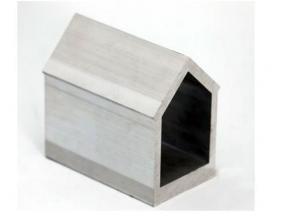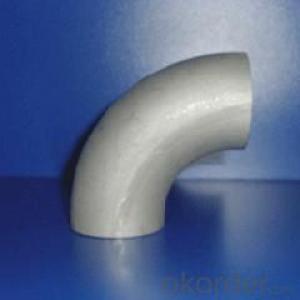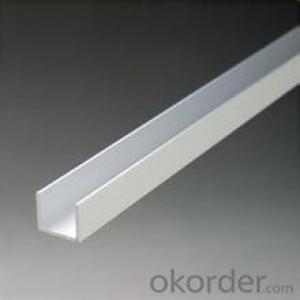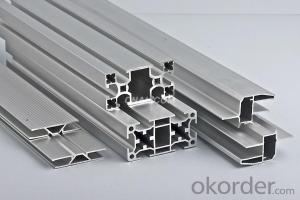Competitive Price Anodizing Aluminum Extrusion Triangle Profiles
- Loading Port:
- China Main Port
- Payment Terms:
- TT OR LC
- Min Order Qty:
- -
- Supply Capability:
- -
OKorder Service Pledge
OKorder Financial Service
You Might Also Like
Aluminium profile
1) Alloy: AA6061, AA6063
2) Temper: T5, T6
3) Series of surface treament:
1. Mill Finished
2. Anodizing: Silver, champagne, light bronze, dark bronze, black, light titanium, dark titanium.
3. Electrophoretic Coating: Silver, champagne, bronze, black, light bronze, dark bronze.
4. Electrostatic Color Powder Coating: Normal color, special color.
5. Fluorocarbon Powder Spraying: Normal color, special color.
6. Wood Grain Coating: Import paper, domestic paper.
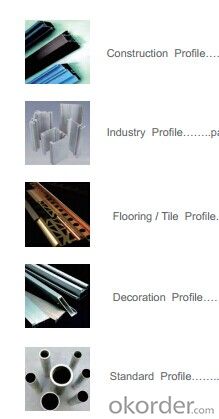
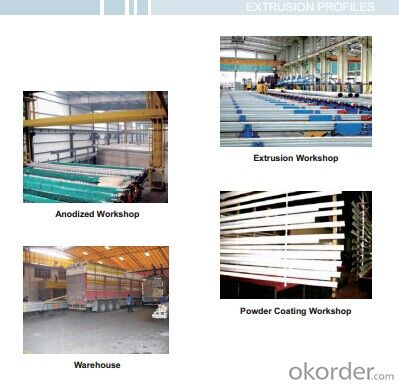
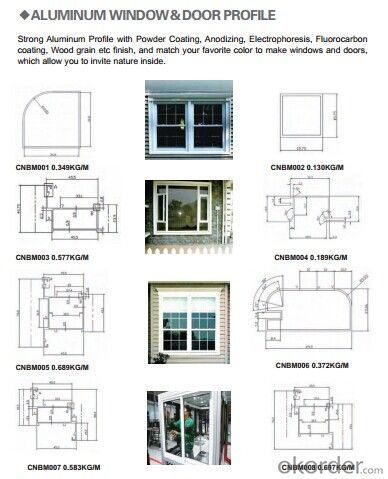
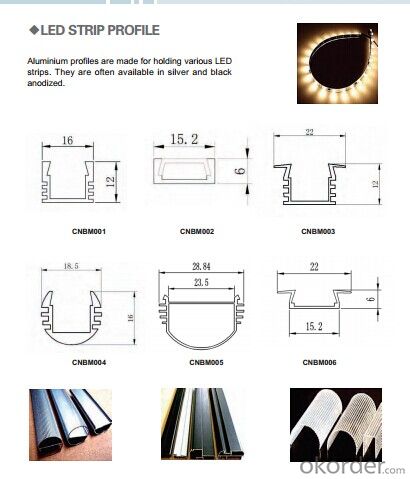
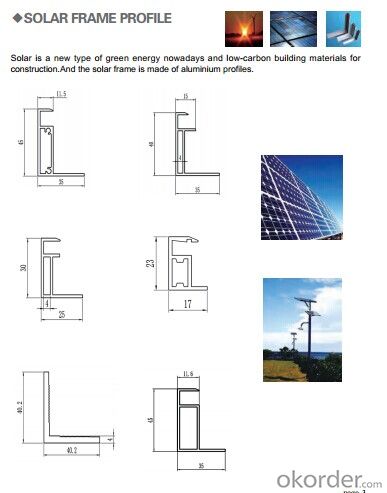
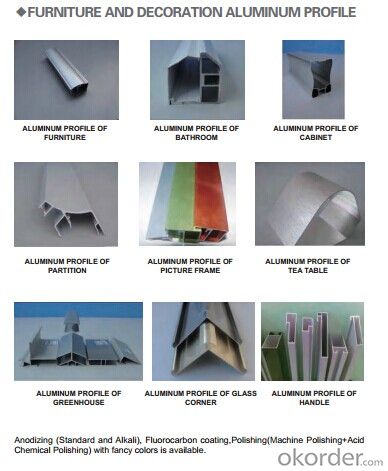
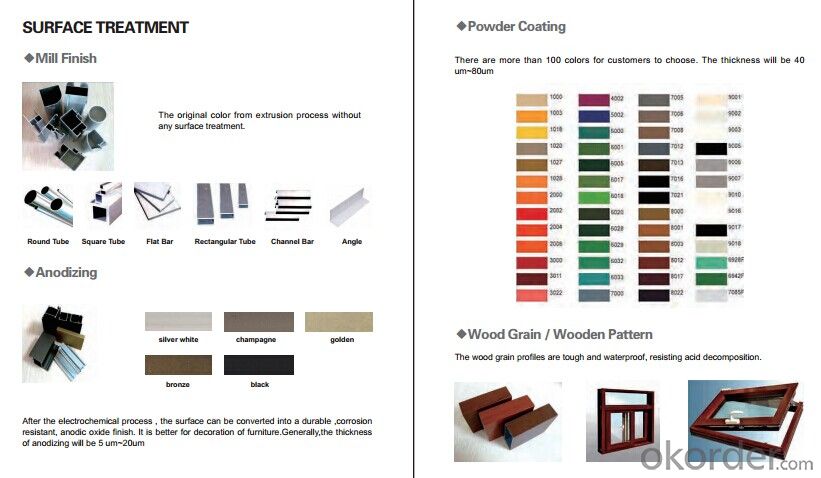
- Q: You know, aluminum radiator, why should aluminum do?
- Shanghai Sichuan PM metal products Co. Ltd.Why does the radiator choose aluminum? Are there any doubts about it? Well, now let's see what the advantages are. First of all, as the radiator, the use of aluminum profiles, as long as it is better heat dissipation, and better than the heat of steel, so in the use of materials will be less than the use of steel radiators. The biggest difference of aluminum radiator is that it has good corrosion resistance. Is due to the use of aluminum, it has the characteristics of corrosion resistance, because after aluminum in contact with oxygen, the aluminum surface to form a layer of oxide film, this layer of film to corrosion effect on the corrosion of an object. So, it's very good corrosion resistance.
- Q: What is the thickness of the aluminum alloy window frame?
- According to the GB / T5237 Aluminum Alloy "building materials" regulations, construction aluminum minimum nominal wall thickness should be not less than 1.2mm, wherein the solid profile wall thickness error of 0.15mm, namely the wall thickness not less than 1.05mm; hollow profile parts containing a closed cavity wall thickness allowance of 0.23mm, the wall thickness is not lower than 0.97mm.
- Q: What are the standard dimensions and sizes of aluminum profiles?
- The dimensions and sizes of aluminum profiles can vary depending on the specific application and industry. However, there are commonly used dimensions and sizes that are widely adopted across industries. Aluminum profiles are available in various shapes, including angles, channels, tubes, and bars. These profiles have dimensions that range from small to large, with measurements based on width, height, and thickness. For instance, aluminum angle profiles typically have widths and heights ranging from 1/2 inch to 8 inches, with thicknesses ranging from 1/16 inch to 1/2 inch. Aluminum channel profiles have widths from 1/2 inch to 12 inches, heights from 1/2 inch to 3 inches, and thicknesses from 1/16 inch to 1/4 inch. Aluminum tube profiles come in different outer diameters, ranging from 1/8 inch to 6 inches, with wall thicknesses from 1/32 inch to 1/4 inch. Aluminum bar profiles usually have widths from 1/8 inch to 12 inches, heights from 1/8 inch to 4 inches, and thicknesses from 1/16 inch to 1/2 inch. It's important to note that these dimensions and sizes serve as a general guideline, and custom dimensions or sizes may be required for specific applications. Furthermore, different countries or regions may have their own standards and variations in aluminum profile dimensions and sizes. Therefore, it's advisable to consult with manufacturers or suppliers to determine the specific dimensions and sizes that meet your requirements.
- Q: What are the different bending and forming options for aluminum profiles?
- Some of the different bending and forming options for aluminum profiles include roll bending, stretch forming, press brake bending, and extrusion bending. These processes allow for the creation of various shapes and designs, offering flexibility and versatility in aluminum profile applications.
- Q: Can aluminum profiles be used for automotive roof racks or cargo systems?
- Yes, aluminum profiles can be used for automotive roof racks or cargo systems. Aluminum is a lightweight and durable material that is commonly used in the automotive industry due to its high strength-to-weight ratio. It is resistant to corrosion, which is particularly important for roof racks that are exposed to the elements. Furthermore, aluminum profiles can be easily shaped and customized to fit specific requirements, making them suitable for various cargo system designs. Overall, aluminum profiles are a popular choice for automotive roof racks and cargo systems due to their strength, lightweight nature, and resistance to corrosion.
- Q: What is the difference between the type 4040c and 4040d of aluminum profile?
- Sometimes there are differences in wall thickness, and sometimes there are differences between strengthening and non strengthening.
- Q: What are the weight limitations of aluminum profiles?
- The weight restrictions of aluminum profiles rely on various factors, including the profile's dimensions, shape, and structural soundness. Aluminum profiles are generally lightweight and possess a favorable strength-to-weight ratio, making them suitable for a wide array of uses. Nonetheless, the maximum weight capacity will differ based on the distinct profile design and intended purpose. Aluminum profiles usually have the ability to bear a considerable amount of weight, particularly when they are engineered and reinforced correctly. For straightforward structural uses, such as framing or support systems, aluminum profiles can withstand loads ranging from a few hundred pounds to several thousand pounds. Industries such as construction, automotive, aerospace, and manufacturing frequently employ these profiles. It is worth noting that the load-bearing capacity of aluminum profiles can be enhanced through various techniques, such as increasing the thickness or incorporating reinforcing elements like gussets or braces. These modifications aid in distributing the weight and enhancing the profile's overall strength. Furthermore, it is vital to consider other factors like the profile's length, the type of connection or fastening method employed, and the overall stability of the structure. These factors can impact the weight restrictions and overall structural integrity of the aluminum profiles. To determine the specific weight limitations of aluminum profiles for a specific application, it is advisable to consult with a structural engineer or refer to the technical specifications provided by the manufacturer.
- Q: Are there any special considerations for installing aluminum profiles?
- Installing aluminum profiles involves several important considerations. To begin with, proper alignment and leveling of the profiles during installation is crucial. This is necessary to achieve a seamless and professional appearance. Tools such as laser levels or spirit levels can assist in this process. Next, it is vital to use the appropriate type and size of fasteners for securing the profiles. Stainless steel or aluminum screws and rivets are commonly used due to their corrosion resistance and ability to provide a secure hold. Additionally, pre-drilling holes in the profiles is important to prevent cracking or splitting. Another factor to consider is the expansion and contraction of aluminum caused by temperature changes. Aluminum has a high coefficient of thermal expansion, so leaving enough space for the profiles to expand and contract without causing damage is necessary. This can be achieved by creating a small gap between the profiles during installation. Moreover, the weight and load-bearing capacity of the profiles need to be taken into account. If the profiles are intended to support heavy loads or structural components, additional support or reinforcement may be required. Lastly, it is crucial to carefully follow the manufacturer's instructions and guidelines for installation. Each type of aluminum profile may have specific requirements, such as recommended installation techniques or maximum spans between supports. Adhering to these guidelines will ensure a safe and secure installation. In conclusion, installing aluminum profiles necessitates careful attention to alignment, fasteners, expansion and contraction, load considerations, and adherence to manufacturer's instructions. By considering these factors, one can ensure a successful and durable installation.
- Q: Are aluminum profiles resistant to termites and insects?
- Yes, aluminum profiles are resistant to termites and insects.
- Q: Can aluminum profiles be an alternative to wood in construction?
- Yes, aluminum profiles can certainly be a viable alternative to wood in construction. Aluminum is lightweight, durable, and resistant to rust and corrosion, making it an excellent choice for various construction applications. Additionally, aluminum profiles offer flexibility in design, are easy to install, and require minimal maintenance. They can be used for structural components, windows, doors, cladding, and other construction elements, providing a sustainable and cost-effective solution compared to wood.
Send your message to us
Competitive Price Anodizing Aluminum Extrusion Triangle Profiles
- Loading Port:
- China Main Port
- Payment Terms:
- TT OR LC
- Min Order Qty:
- -
- Supply Capability:
- -
OKorder Service Pledge
OKorder Financial Service
Similar products
Hot products
Hot Searches
Related keywords
